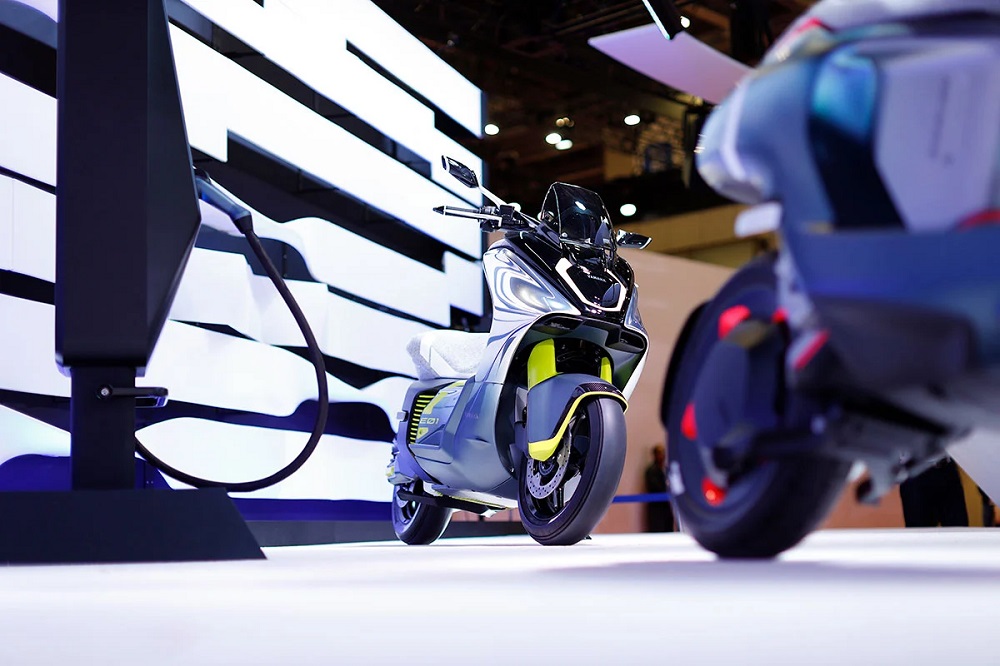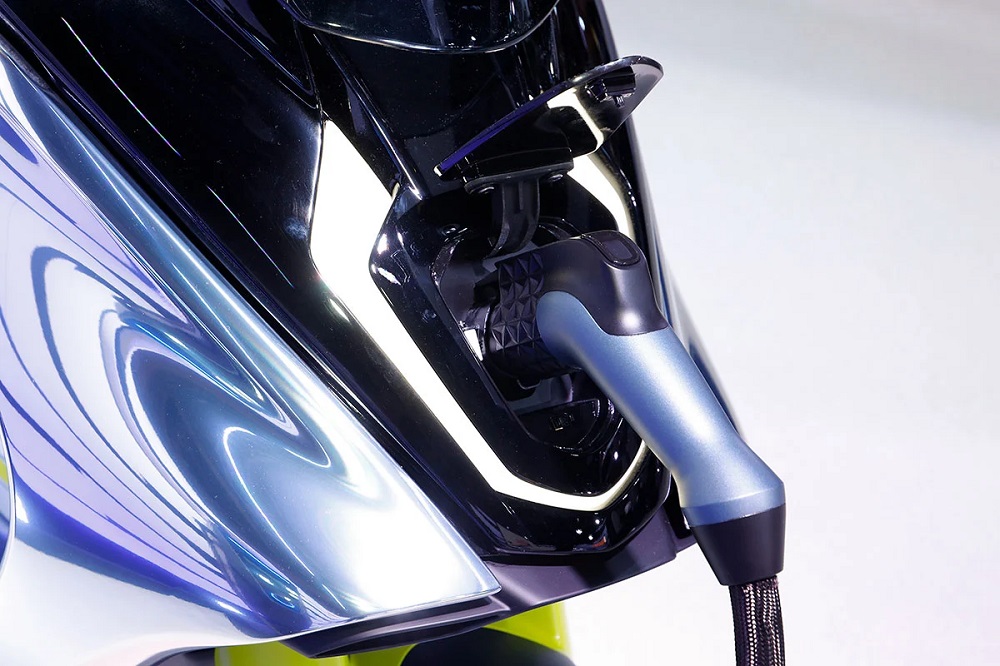Paul Tan reports that of the regions selected, Malaysia will serve as the tropical conditions testing ground while Europe will be for temperate climates. As part of the PoC stage, the Yamaha E01 will “address issues such as travel range, charging methods and charging times, all cited as challenges facing the widespread adoption of electric vehicles”. As for the scooter itself, the Yamaha E01 is effectively an EV equivalent of the NMax, a 155cc scooter. The E01 will run an electric motor that can deliver 8.1 kW at 5,000 rpm and 30.2 Nm of torque at 1,950 rpm, giving it a top speed of 100km/h. Powering it will be a 4.9 kWh lithium-ion battery which gives it about 100km of range. The report notes that what makes the Yamaha E01 different from typical electric scooters with removable batteries is that it still has a 28-lire storage space under the seat. For charging, it uses a proprietary socket, and has three charging modes. The most basic one takes five hours to give it a full charge, while a fast charger will be able to give it 80% charge in one hour. And then there’s a portable charger that uses a 110 to 240 Volt AC supply and has a 14-hour charging time. The Yamaha E01 is expected to begin the PoC testing in July of this year. Data gathered will then be analysed for future EV development. (Source: Paul Tan [1], [2])

